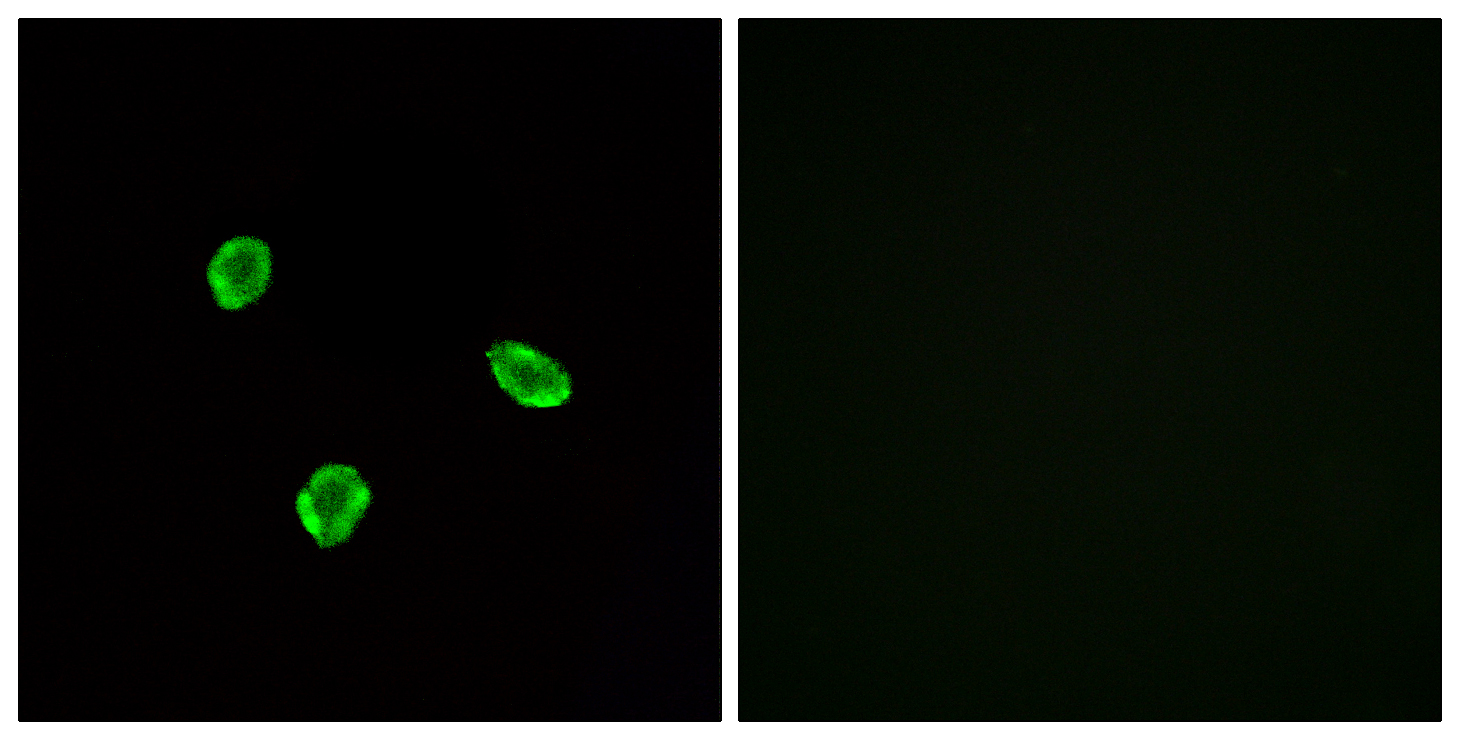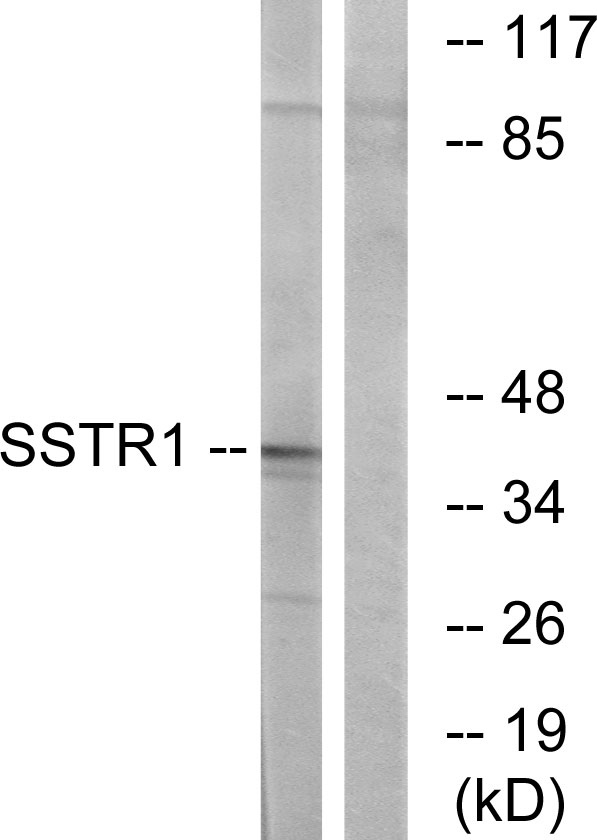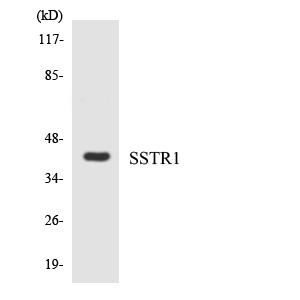SSTR1 Polyclonal Antibody
- Catalog No.:YT4429
- Applications:WB;IF;ELISA
- Reactivity:Human;Mouse;Rat;Monkey
- Target:
- SSTR1
- Fields:
- >>cAMP signaling pathway;>>Neuroactive ligand-receptor interaction;>>Growth hormone synthesis, secretion and action
- Gene Name:
- SSTR1
- Protein Name:
- Somatostatin receptor type 1
- Human Gene Id:
- 6751
- Human Swiss Prot No:
- P30872
- Mouse Gene Id:
- 20605
- Mouse Swiss Prot No:
- P30873
- Rat Gene Id:
- 25033
- Rat Swiss Prot No:
- P28646
- Immunogen:
- The antiserum was produced against synthesized peptide derived from human SSTR1. AA range:9-58
- Specificity:
- SSTR1 Polyclonal Antibody detects endogenous levels of SSTR1 protein.
- Formulation:
- Liquid in PBS containing 50% glycerol, 0.5% BSA and 0.02% sodium azide.
- Source:
- Polyclonal, Rabbit,IgG
- Dilution:
- WB 1:500 - 1:2000. IF 1:200 - 1:1000. ELISA: 1:20000. Not yet tested in other applications.
- Purification:
- The antibody was affinity-purified from rabbit antiserum by affinity-chromatography using epitope-specific immunogen.
- Concentration:
- 1 mg/ml
- Storage Stability:
- -15°C to -25°C/1 year(Do not lower than -25°C)
- Other Name:
- SSTR1;Somatostatin receptor type 1;SS-1-R;SS1-R;SS1R;SRIF-2
- Observed Band(KD):
- 43kD
- Background:
- Somatostatins are peptide hormones that regulate diverse cellular functions such as neurotransmission, cell proliferation, and endocrine signaling as well as inhibiting the release of many hormones and other secretory proteins. Somatostatin has two active forms of 14 and 28 amino acids. The biological effects of somatostatins are mediated by a family of G-protein coupled somatostatin receptors that are expressed in a tissue-specific manner. The protein encoded by this gene is a member of the superfamily of somatostatin receptors having seven transmembrane segments. Somatostatin receptors form homodimers and heterodimers with other members of the superfamily as well as with other G-protein coupled receptors and receptor tyrosine kinases. This somatostatin receptor has greater affinity for somatostatin-14 than -28. [provided by RefSeq, Jul 2012],
- Function:
- function:Receptor for somatostatin with higher affinity for somatostatin-14 than -28. This receptor is coupled via pertussis toxin sensitive G proteins to inhibition of adenylyl cyclase. In addition it stimulates phosphotyrosine phosphatase and Na(+)/H(+) exchanger via pertussis toxin insensitive G proteins.,similarity:Belongs to the G-protein coupled receptor 1 family.,subunit:Interacts with SKB1.,tissue specificity:Fetal kidney, fetal liver, and adult pancreas, brain, lung, jejunum and stomach.,
- Subcellular Location:
- Cell membrane; Multi-pass membrane protein.
- Expression:
- Fetal kidney, fetal liver, and adult pancreas, brain, lung, jejunum and stomach.
- June 19-2018
- WESTERN IMMUNOBLOTTING PROTOCOL
- June 19-2018
- IMMUNOHISTOCHEMISTRY-PARAFFIN PROTOCOL
- June 19-2018
- IMMUNOFLUORESCENCE PROTOCOL
- September 08-2020
- FLOW-CYTOMEYRT-PROTOCOL
- May 20-2022
- Cell-Based ELISA│解您多样本WB检测之困扰
- July 13-2018
- CELL-BASED-ELISA-PROTOCOL-FOR-ACETYL-PROTEIN
- July 13-2018
- CELL-BASED-ELISA-PROTOCOL-FOR-PHOSPHO-PROTEIN
- July 13-2018
- Antibody-FAQs
- Products Images

- Immunofluorescence analysis of A549 cells, using SSTR1 Antibody. The picture on the right is blocked with the synthesized peptide.

- Western blot analysis of lysates from COS7 cells, using SSTR1 Antibody. The lane on the right is blocked with the synthesized peptide.

- Western blot analysis of the lysates from COLO205 cells using SSTR1 antibody.



